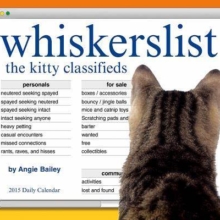Choosing an excellent host: 3 steps
Choosing a Web hosting services provider can be a challenge. There are literally thousands of companies that offer countless products and services. It can be a difficult task for a novice as well as for a seasoned professional, but it doesn’t have to be. We’ve broken the process down into three steps:
Step One: Free or Paid Hosting?
Step Two: Determine Expectations
Step Three: Compare Hosts in the Right Category
Step One: Free or Paid Hosting?
To Pay or Not To Pay?
A large percentage of Web sites are ‘free’ and posted by individuals for personal reasons. Typically, these sites are associated with one of the larger portals such as Yahoo or AOL and consist of a page or two with limited content. If you’re looking to put up a personal site like this, look no further than the solutions offered by these two companies. The tools and applications such as email, community interest portals, and photo management software provided are straightforward and make setting your site up very easy.
The downside to free hosting? Generally, you’ll have to put up with banner ads on your homepage or other ads you don’t get to pick. To be fair, it’s how these companies can afford to set up your infrastructure for free. All the same, you have no control over whose ad shows up on your site. If that’s unacceptable, a paid hosting solution (some start lower than $5/mo) might be your best bet. Some low-cost solutions are EasyCGI, IPower, and StartLogic.
Most Web hosting companies bundle services into a series of packages. The standard hosting service component is normally a bundle of disk storage space (where your site is stored) and bandwidth (the capacity for data transfer of a wired or wireless communication system.) In addition, hosting companies usually bundle email services with standard plans. The email service contains POP and IMAP solutions which direct email received through your site to desktop applications (Outlook® or Exchange®.) “Web-mail” is also provided to view and manage email through a Web browser.
[VidConnect vidp=’30014′ vidn=’3′ vidt=’default’ vidv=’4COpHzXAwlU’]
Frequently, small businesses want a Web site that functions only as an online brochure that provides information about the business but does not sell products. Standard packages are ideal if you’re building a simple brochure site. Additional service packages offer eCommerce, media-intensive applications for video and audio sharing, and dedicated servers, designed to back up more complex business requirements. Paid solutions pretty much come down to whether you’re going to sell products and services online or just display information in a brochure format and what kind of customer and technical support you’ll require.
Step Two: Determine Expectations
You Get What you Pay For
There are basically two price levels prevalent in Web hosting. There’s a large group of Low Price or Discount hosts that offer nice solutions from below $5 to $15 per month and there are hosts that offer solutions that start above $15 and the pricing goes up from there. Companies such as Affinity have developed a number of different hosting brands to help simplify the customer experience. As an example, Affinity uses the HostSave and WinSave brands for their low-cost hosting solutions and the ValueWeb brand for their premium services.
Customer service is usually the primary difference between inexpensive hosting solutions and higher-priced options. Here’s where the “you get what you pay for” maxim comes into play. Prior to choosing a provider, it’s important to determine how serious you are. In other words, if the site is your small business lifeline, where you’ll find customers, display, sell and even ship products you probably don’t want a hosting company that won’t answer calls when there’s a problem. On the contrary, many experienced professionals would rather not talk to someone and prefer technical support and customer service through email or online chat.
Clarifying expectations ahead of time can mean the difference between a great online experience or being completely frustrated and without support. The extra $10 per month may be worth the peace of mind it buys.
Step Three: Compare Hosts in the Right Category
Once you know whether you need a standard hosting plan or an eCommerce solution and whether low price or premium (a.k.a. better customer support) hosting is right for you, it’s time to shop. Any of the major search engines will provide a multitude of responses with a query such as Web Hosting or eCommerce hosting. You can even narrow your search with more definitions. A search for “Cheap eCommerce hosting” will yield most companies whose solutions fall in the low price category. Actually, you don’t even have to go to a search engine to find cheap hosts. Everything you need is here. Go to Hosting Reviews and you will find a large list of hosts, all with reviews, user comments, and ratings. From there you can find the cheapest or best host to suit your needs.
Take some time and visit several hosting company’s Web sites. Go over plan options and see which offer the services and support that match your expectations. Because of the similarities, hosting plans can become confusing. Most major providers have a “Compare Plans” page you can print. It is good to print out the various packages and have them in hand while you shop.
Using Affinity’s ValueWeb brand as an example, some hosts offer a portal where you’re free to ask existing customers if they’re satisfied and recommend the provider. Look for this function as you shop, it’s an excellent tool in how to determine whether a company is right for you. Unless you’re an experienced professional you shouldn’t buy a solution without at least first talking to a sales rep at the company. This gives a sense of the company’s commitment to its customers. Many also call the technical support numbers to see how long it takes to answer and how friendly and knowledgeable the staff is. Companies such as Affinity, combined sales, and support departments so when you order an account you’re talking to a technical support representative as well. This creates a forum in which all questions can be answered without having to be transferred to other departments.
It’s important to find a hosting relationship that fits your needs and who’s level of involvement you feel comfortable with. Following these steps will make choosing a Web hosting solution easier and, hopefully, even fun.

I’d Love to Change the World – Alvin Lee & Ten Years After …from “A Space in Time” (1971)















